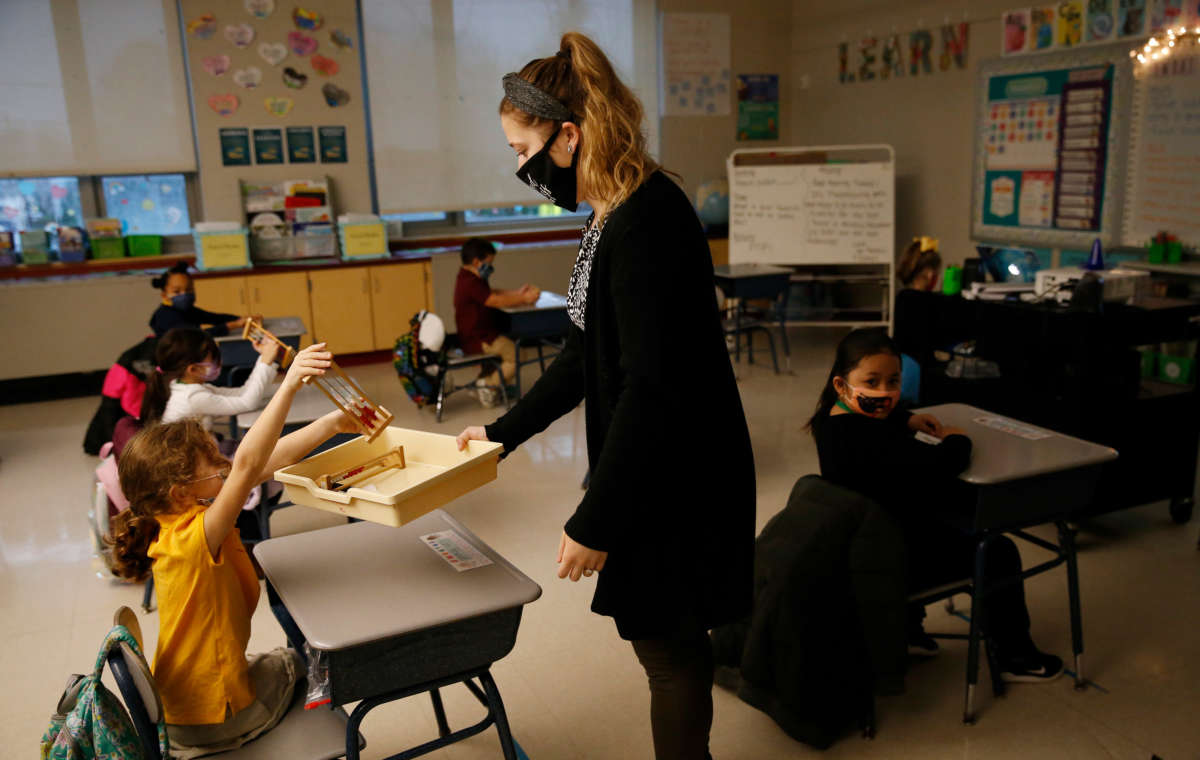Several news outlets reported this week about recommendations made by a team of Centers for Disease Control and Prevention (CDC) researchers that aimed to give advice on how schools across the country could begin to reopen amid the continued coronavirus pandemic. But while these headlines were widely shared on social media, many may have missed a huge caveat in the researchers’ guidance.
The CDC officials’ viewpoint piece, published online in the Journal of the American Medical Association (JAMA), suggested that “the preponderance of available evidence from the fall school semester has been reassuring,” noting that the spread of the virus, compared to what has been observed in nursing homes or in workplaces for example, “has not been reported in education settings in schools.”
Head author Margaret Honein, speaking to The Washington Post about the published piece, noted that “with proper prevention efforts … we can keep transmission in schools and educational settings quite low.”
“With good prevention, we can safely reopen and keep open more schools,” Honein added in her comments to The Post.
The major proviso in the piece published by Honein and her CDC colleagues is that schools cannot reopen unless certain precautions are taken first, including within the communities themselves where the schools are located.
While the report notes that “mitigation measures in schools must continue” — including mask use, increasing physical distance between students by lowering class sizes, using hybrid attendance models where needed, increasing air ventilation, and expanding coronavirus testing — efforts to contain COVID outside of schools need to be adhered to as well.
“Preventing transmission in school settings will require addressing and reducing levels of transmission in the surrounding communities through policies to interrupt transmission (eg, restrictions on indoor dining at restaurants),” the CDC researchers wrote.
In order to ensure the safe operation of schools, communities will likely have to make “difficult” decisions, the report adds in its concluding paragraph, including “a commitment to implement community-based policies that reduce transmission.”
The conditions placed on reopening schools, particularly for communities, may be problematic for a number of places across the country, as many Americans are still refusing to take the pandemic seriously, even after more than 425,000 have died from COVID in the U.S. so far.
While a majority of Americans describe themselves as “very worried” or “somewhat worried” about coronavirus in a recently published Economist/YouGov poll, nearly 4 in 10 (39 percent) say they are “not too worried” or “not worried at all.”
Other polls in recent months have shown that many in the U.S. are refusing to adhere to social distancing standards, thwarting CDC guidelines on how to lessen the spread of COVID-19. A Gallup poll in November, for example, found that 31 percent of respondents believed people without symptoms should continue to “lead normal lives” rather than try to stay at home as much as possible to prevent contracting the virus. A separate poll from that same month found that between 25 and 30 percent of Americans were still planning to travel for Thanksgiving, in spite of the CDC’s advice not to do so.
In December, a HealthDay/Harris poll also found that only two-thirds of Americans (66 percent) were “always” wearing masks whenever they traveled outside of the home — a figure that represents a declining rate from the same poll taken months prior.
If schools across the nation are desiring to reopen, these numbers likely need to show marked improvement before communities can do so in a safe way.
While studies have demonstrated that children are less likely than older individuals to face harm from the virus, it doesn’t mean that they are completely safe or immune from the dangers of COVID-19. Additionally, even if a child doesn’t present symptoms or get sick while being a carrier of the coronavirus, a number of studies have shown that children are just as likely as adults to spread the virus to others.
In short, if schools reopen in communities that have largely neglected to adhere to social distancing principles or mask-wearing, there’s a high likelihood that coronavirus will continue to be a significant problem, even if districts implement policies for students that have been proven to work.
Our most important fundraising appeal of the year
December is the most critical time of year for Truthout, because our nonprofit news is funded almost entirely by individual donations from readers like you. So before you navigate away, we ask that you take just a second to support Truthout with a tax-deductible donation.
This year is a little different. We are up against a far-reaching, wide-scale attack on press freedom coming from the Trump administration. 2025 was a year of frightening censorship, news industry corporate consolidation, and worsening financial conditions for progressive nonprofits across the board.
We can only resist Trump’s agenda by cultivating a strong base of support. The right-wing mediasphere is funded comfortably by billionaire owners and venture capitalist philanthropists. At Truthout, we have you.
We’ve set an ambitious target for our year-end campaign — a goal of $119,000 to keep up our fight against authoritarianism in 2026. Please take a meaningful action in this fight: make a one-time or monthly donation to Truthout before December 31. If you have the means, please dig deep.
